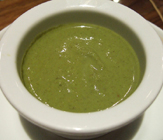Selection and Storage
Fresh and dried parsley are both available in markets year-round. It’s advisable to opt for fresh leaves over the dried variety as they offer superior flavor and are rich in essential vitamins and antioxidants. Look for vibrant green leaves and firm stalks, avoiding any signs of mold, dark spots, or yellowing.
Similarly to other dried herbs, when purchasing dried parsley, prioritize organic options to ensure it hasn’t been irradiated and is free from pesticide residues.
To store fresh parsley, keep it in the refrigerator either packed in a zip pouch or wrapped in a slightly damp paper towel. Dried parsley can be stored for several months in a tightly sealed glass container placed in a cold, dark, and dry environment.
Medicinal Uses
-
The leaves, stalks, and roots of parsley herb plant possess antiseptic and carminative properties.
-
Eugenol has also been found to reduce blood sugar levels in diabetics; however, further detailed studies are required to establish its role.
-
An extraction from the herb has been found to have diuretic effects.
Preparation and Serving methods
Parsley should be thoroughly washed in water to remove sand, dirt, and any residual pesticides. Trim the roots, thick parts of stems, and any bruised or old leaves. Generally, parsley is added at the end of recipes to preserve its fragrance and aromatic flavor.
Here are some serving tips:

|

|
| Delicious zucchini bite with parsley as a garnish. Photo: norwichnuts | Mediterranean green sauce-Salsa verde. Photo: toyohara |
-
The herb is widely used as a garnish, with many dishes served with freshly chopped green parsley sprinkled on top.
-
It has been utilized in the preparation of numerous popular dishes in Mediterranean and European cuisine since ancient times. Alongside other herbs and spices, it serves as a flavoring agent in vegetable, chicken, fish, and meat dishes.
-
It is a common ingredient in the renowned Mediterranean green sauce, “salsa verde,” a cold sauce comprising parsley, capers, garlic, onion, anchovies, olive oil, and vinegar.
-
Freshly chopped parsley makes a fantastic addition to a green salad.
-
Both fresh and dried parsley leaves can be used in the preparation of chutneys, dips, pesto, etc.
Safety Profile
-
Pregnant women should avoid consuming parsley in large amounts or as a drug or supplement. The essential oil found in its root, leaf, or seed could potentially induce uterine stimulation, leading to bleeding and preterm labor.
-
This herbaceous plant is notably high in oxalic acid, with 1.70 mg per 100 g. Prolonged consumption of oxalate-rich foods may result in gouty arthritis, kidney stones, and mineral nutrient deficiencies.
-
Parsley oil contains furanocoumarins and psoralens, which may cause extreme photosensitivity if ingested orally. (Medical disclaimer).
≻≻-Back to Herbs from Parsley. Visit here for an impressive list of all varieties of herbs with complete illustrations of their nutrition facts and health benefits.
≻≻-Back to Home page.
Further Resources:
-
Refer Stanford School of Medicine Cancer information Page-Nutrition to Reduce Cancer Risk (Opens in New Window).
-
Pub med: Parsley (Opens new window).

